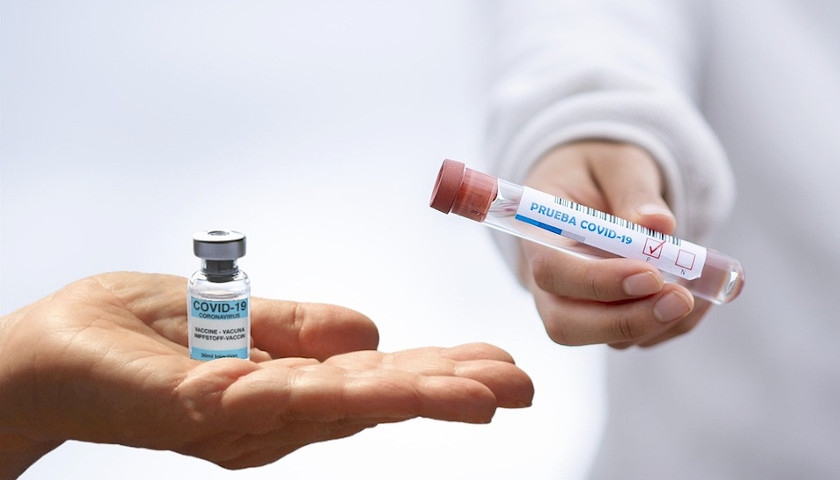by Jennifer Beck
College students have had a new test to pass this school year; in fact it’s a test most have been required to pass more than once: the COVID-19 test.
When school resumed in the Fall of 2020, every higher educational institution across the United States established their individual COVID protocol plans. The 3rd largest University in the nation, The Ohio State University, jumped right in with an aggressive testing model.
“In order to remain open this fall, we have to drive the COVID-19 positivity rate well below the current Franklin County rate of 5.5%, in order not to fill up the residence hall spaces and hospital beds available for quarantine, isolation and treatment.” That was back on August 11, when OSU President Kristina Johnson announced initial fall student testing plans. That was also the time when statewide, the emphasis was high on keeping hospital availability, especially ICU beds available, anticipating an onslaught of many needing ventilators to survive.
And so…Buckeye student mass testing began.
In the first 4 weeks, Ohio State performed 40,000 tests at a cost of 2 million dollars per week ($8 million a month). OSU officials say testing was paid by federal CARES Act funds. Fast forward to the end of March, 2021. Students are currently testing weekly, and for 10 days in March, that testing requirement doubled.
That’s a lot of tests. That’s also a lot of data, week to week, to establish reliable trends.
Since the start of the spring semester, Ohio State has administered 295,992 tests. As of March 27, only .66% of students have tested positive for COVID-19 in the spring semester. The 7 day positive case rate (as of March 27) was .49% 99.51% of all tests administered March 19-26, 2021 were negative.
The Ohio State University’s vigorous testing plan, as well as the weekly testing plans instituted at other universities across the state, are proving alignment with nationwide statistics about the college age student demographic.They have an inappreciable chance to be hospitalized due to COVID, and an even lower chance of dying. This age group, being one of the highest tested age demographics in the state of Ohio, also has the one of the lowest statistical chances of filling ICU beds.
According to the State of Ohio’s Coronavirus Website, .01% of individuals in the 0-29 age group, who have tested positive for COVID-19 had to be hospitalized. Point zero one percent! That means 99.99% of college age students who tested positive for COVID-19, recovered with no hospital bed needed. Exactly what OSU President Johnson stated back in August has been achieved. OSU students are not filling up hospital rooms. In fact, they’re not even filling up OSU quarantine locations. As of March 26, 2021, only 8 students were in quarantine, 26 in isolation, and 95% of the college’s COVID-19 quarantine related housing remained open.
Meanwhile, the already known outcomes continue to be tested, and not just at Ohio State.
Kent State University requires weekly testing for on-campus residential students. Ohio University, in Athens, requires the same. Ohio U. has conducted 59,691 asymptomatic testing cases. 99.4% of those tests returned negative.
That’s a lot of tests. A lot of money. A lot of time. And a lot of negative results.
So how is this data being used? In what could be considered Ohio’s largest unofficial COVID-19 clinical test on a specific age group, epidemiologists, data analysts, and the Ohio Department of Health have been quiet. They have 9 months of cumulative numbers available to them, data that is continually pointing to the same conclusion: Ohio’s college population is not a COVID super spreader.
But who is taking note of this data? Neither Governor DeWine nor Health Department Director Stephanie McCloud have publicly recognized what the stats are stating. Perhaps officials elsewhere, however, are interpreting the information.
Miami University in Oxford, OH doesn’t require weekly tests. “The testing strategy is based on a number of different factors that include taking into consideration others who may have tested positive and share facilities with you, density of congregate living environments, and shared activities. Some students will be asked to test more frequently than others.” That’s the answer to the FAQ “How many times will I be tested this spring?” on Miami University’s website.
Their comprehensive dashboard includes more than just daily testing data. It even indicates case level on each residential hall.
The University of Cincinnati is also not requiring their entire residential population to test each week. As of March 23, their website stated, “During Spring Semester 2021, students will receive notice when they have been selected to participate in ongoing random sample testing.” Using a randomized testing approach, 6 students on campus tested positive between March 13-19 with a positivity rate of .36%
By March 27, that same website page had shifted its focus to talk of the COVID-19 vaccine and an upcoming town hall meeting. Around the same time, Rutgers University announced that the COVID-19 vaccination would be required for students in Fall 2021.
Ohio State’s Schottenstien center has been transformed into a vaccine administration site. March 19, the center registered its 100,000th vaccine. Starting March 29, college age students (anyone 16 and older) will be eligible to receive the shot.
What is the future for Ohio’s college students? Will a COVID-19 vaccine become a requirement for future university entry? Or will epidemiologists and other medical experts analyze the extensive 2020-2021 college testing data and conclude that college residential living is not creating a major impact on hospital bed, ICU, or ventilator use? With a 99.9% negative testing rate, could it be said that there is no state of emergency among college campuses?
Or is there an even bigger question to ask? What impact does the government have and are politics involved? These are merely questions.
After months of test results, and statistical suggestion that Ohio is at the later point in the life cycle of the pandemic, it may be seemingly elementary that this demographic no longer benefits testing in mass. They could safely move to symptom driven testing like the rest of society at large.
– – –
Jennifer Beck is the Senior Producer/Anchor & Director of Marketing at WTLW TV-44 in Lima, OH. She writes independently about COVID, health & wellness, medicine, and cancer. She can be contacted at [email protected].





